SFJazz Collective - Music of Miles Davis & Original Compositions Live SFJazz Center 2016 (2017)
- 04 Jun, 21:10
- change text size:
Facebook
Twitter

Artist: SFJazz Collective
Title: Music of Miles Davis & Original Compositions Live SFJazz Center 2016
Year Of Release: 2017
Label: SFJAZZ Records
Genre: Jazz
Quality: FLAC (tracks)
Total Time: 138:45 min
Total Size: 809 MB
WebSite: Album Preview
Tracklist:Title: Music of Miles Davis & Original Compositions Live SFJazz Center 2016
Year Of Release: 2017
Label: SFJAZZ Records
Genre: Jazz
Quality: FLAC (tracks)
Total Time: 138:45 min
Total Size: 809 MB
WebSite: Album Preview
CD1:
1. So What
2. Nardis
3. Milestones
4. Tutu
5. Bitches Brew
6. All Blues
7. Joshua
8. Teo
CD2:
1. Tribe
2. Canto
3. Your Turn
4. 111
5. In the Heat of the Night
6. Shields Green
7. Hutcherson Hug
8. Feel the Groove
In the thirteen years since the SFJAZZ Collective first came together in February 2004, this revolving door octet (septet, in 2009) of "cream of the crop" US-based jazz musicians has, most years, followed a consistent modus operandi: select a well-known jazz (and, in two cases, beyond jazz) musician and pay tribute through innovative arrangements of his/her music, alongside a set of new original compositions—in almost every case, one each contributed by every member of the Collective.
In the ensuing years since its 2004 debut, which set an initial high bar by paying tribute to free jazz progenitor Ornette Coleman, the Collective has delivered additional homages to everyone from John Coltrane, Herbie Hancock, Thelonious Monk, Wayne Shorter and McCoy Tyner to Horace Silver, Chick Corea, Joe Henderson, Stevie Wonder and Michael Jackson.
While there are more than enough artists to keep the Collective going in perpetuity, the above list of largely iconic jazz artists is missing one obvious entry: Miles Davis. It's curious, in fact, that it took the Collective so long to get to the late trumpeter, bandleader and stylistic redefiner; but perhaps it's the particularly broad scope of Davis' career that led to the Collective holding off until it could figure out how to best cover the farthest reaches of a musician who moved effortlessly—and in just four decades, from the 1950s through early '90s—from bebop to cool jazz, from modal jazz to free bop, and from the densely electrified fusion of the 1970s through a more eminently accessible and star power-driven final chapter of pop-informed jazz.
Thirteen years may have been a long time to wait for an SFJAZZ Collective tour and album dedicated to the music of Davis, along with a host of new original compositions from the current octet, but with Live: SFJAZZ Center 2016—Music of Miles Davis & Original Compositions, it's clearly been worth the wait.
A two-disc set, with one dedicated to the Davis arrangements and the other featuring the original compositions, Music of Miles Davis manages to cover considerable Davis territory with a compelling and creative blend of reverence and reinvention. Bassist Matt Penman contributes a reshuffled look at the title track to Milestones (Columbia, 1958), while trumpeter Sean Jones creates a semi-faithful reconstruction of "So What" and pianist Edward Simon metrically rejigs "All Blues," both from Kind of Blue (Columbia, 1959). Alto saxophonist Miguel Zenon refracts "Nardis"—a composition written, but never actually performed, by Davis for then-Davis sextet altoist Julian "Cannonball" Adderley's Portrait of Cannonball (Riverside, 1958)—through a folkloric and Eastern European-tinged prism, while vibraphonist Warren Wolf contributes a hard-swinging "Joshua," first heard on the transitional Seven Steps to Heaven (Columbia, 1963), and tenor saxophonist David Sanchez presents a more outré yet still rhythmically propulsive look at "Teo," from Someday My Prince Will Come (Columbia, 1961). And, representing Davis' electric years, drummer Obed Calvaire deconstructs the title track to Davis' seminal fusion masterpiece Bitches Brew (Columbia, 1970), resulting in an even more open-ended take, while trombonist Robin Eubanks builds a fragment-driven and groove-heavy deconstruction of the title track to 1986's Tutu (Davis' Warner Brothers debut and first deep collaboration with bassist Marcus Miller).
This is the Collective's longest-lasting lineup—with the exception of Jones replacing Avishai Cohen, this incarnation has remained consistent since 2015's Live: SFJAZZ Center 2014-The Music of Joe Henderson & Original Compositions (SFJAZZ, 2015). And, while only Zenón remains from the Collective's 2004 incarnation—but with Penman coming a close second, joining the group for its Second Season in 2005, and trombonist Robin Eubanks a relatively close third, having joined the group for its Fifth Annual Concert Tour in 2008—it's significant that the engine driving the Collective has remained stable since Live: SFJAZZ Center 2013—The Music of Chick Corea & New Compositions (SFJAZZ, 2014), with Simon, Penman and Calvaire. In many ways, it's the ideal confluence of the Collective's ongoing introduction of fresh ideas from new members and an adherence to the old adage "if it ain't broke, don't fix it."
This constant refreshing of the Collective's lineup has led to a group united in concept if not by specific sound or chemistry, though both can be found in abundance with each lineup...including thus current one. That said, if the group must be placed in a box, the term "modern mainstream" best fits: largely acoustic, with a clear reverence for the jazz tradition while, at the same time, continually introducing ideas from farther afield, often the result of each of its members' work outside the Collective (with every member a leader in his own right), and plenty of the more sophisticated harmonic and rhythmic developments that have earmarked a considerable amount of the music coming from the post-'60s generations.
In recent years the Collective has also begun introducing a little electricity into the picture, with Cohen and Eubanks' tasteful effects first heard on Live in New York Season 8—Music of Stevie Wonder (SFJAZZ, 2011). Here, while still focusing largely on acoustic piano, Simon also adds a chiming Fender Rhodes to "Bitches Brew" and midway through "Tutu," while contributing synthesizer to two originals: Calvaires's numerically driven, polyrhythmic and densely contrapuntal "111"; and Eubanks' relatively (and uncharacteristically) simple yet still far from without its challenges composition, "Shields Green."
Every Davis arrangement, every new original composition, provides plenty of solo space, though the Collective rarely resorts to straight "head-solo-head" formats, instead couching improvisational work without the context of detailed compositional forms. With only two tracks dropping below the seven-minute mark and most tracks more than comfortably breaking the eight-minute threshold, there's a plethora of opportunities for delineated soloing, in-tandem trade-offs, extemporizations bolstered by appealing, four-part horn passages, breakdowns of the Collective into smaller subsets, unfettered free play and full-on octet blowing.
There's an embarrassment of riches to be found across Live: SFJAZZ Center 2016—Music of Miles Davis & Original Compositions' 140-minute program. One of the more intriguing Davis arrangements is Calvaire's "Bitches Brew"—a reading that flirts, at the start, with Joe Zawinul's title track to the trumpeter's similarly groundbreaking record from the previous year, In a Silent Way (Columbia, 1969), before opening up to greater freedom that remains predicated on the many simple but memorable fragments that Calvaire found while researching Davis' many live versions of the tune. The drummer discovered there were no consistent theme(s) across performances and so, he chose a few and arranged around them...most notably Davis' single-note staccato shots. As the track unfolds, what becomes clear is that Calvaire has fashioned a new, more considered arrangement; one that shifts from temporally unfettered free play to a more complexly constructed collection of time-driven brass lines, snaking through the drummer's frenetic playing before a brief but impressive bass solo leads to a near-free-for-all, with only Penman holding down the rhythm as even more frenzied lines emerge, as Calvaire both mirrors their rhythms and fills with reckless abandon before the group finally coalesces with the original track's seven-note ostinato. It's an exhilarating version; one which deconstructs the original's collage construction by producer Teo Macero and reconstructs it into a new form that Davis would never have been able to conceive at the time, based on his recording approach at that juncture in his career.
Calvaire's deconstruction/reconstruction is one of the Collective's approaches to creating 21st century arrangements of timeless classics, as Zenón demonstrated in his arrangement of "Superstition," from the Stevie Wonder set. Still, that shouldn't be taken as a suggestion of predictability; if anything the Collective has demonstrated, year after year, that it has the capacity to breathe new life into well-known material, even when its approach is more literal.
Jones' arrangement of "So What," the opening track to Davis' classic Kind of Blue, may begin with a brief, tightly arranged eight-second ensemble figure before turning more literally to the original's opening bass and piano duo (faithfully transcribed) and what has become one of the most instantly recognizable call-and-response themes in jazz history. Taken at a particular fast clip, re-harmonized and gradually morphing into a newly minted theme that finally comes back to its initial section, it opens up to a fast-swinging solo section for Eubanks. As he signals the end of his solo with a quote of Davis' familiar bass line, Simon picks up the baton for an equally impressive turn: another example of how, bolstered by Penman and Calvaire's unshakable anchor, the pianist constructs motif-driven improvisations that, like Eubanks, possess a clear sense of form, even as they are predicated upon in-the-moment spontaneity.
Zenón, a recipient of both the Guggenheim Fellowship and MacArthur ("Genius Grant") Fellowships—and a writer capable of bridging the gap between knotty complexity and folkloric innocence/simplicity—delivers a characteristically challenging chart for "Nardis," a modal tune that became much better known through pianist Bill Evans' many recordings. It's also taken at an uncharacteristically bright tempo, with a combination of serpentine lines and stop/start rhythms; a revision of the original melody to include some brief Eastern-tinged tonalities; and enough freedom to allow for a thrilling series of trade-offs (over a more complex form) between Zenón and Wolf before leading to an equally electrifying solo from Calvaire and a breathtaking ensemble conclusion that seems to challenge everyone—players and audience—to keep up.
Eubanks' "Tutu" reshuffles and alters the emphases on familiar but considerably re-harmonized changes, with Simon, Penman and Calvaire's metrically challenging support anchoring a set-defining solo of staggering virtuosity from the trombonist, before the tune finally shifts to the familiar, greasy bass line, muted trumpet theme...and a more atmospheric undercurrent, as Simon switches to Fender Rhodes.
Amongst one of the best sets of new original compositions since the Collective first formed, Penman's metrically challenging "Your Turn" is as worthy of attention as any, as the bassist jokingly describes the composition, in the liner notes, as "a poorly disguised attempt at revenge for many years of hard rhythm parts thrown at me." The first two minutes is a brass chorale of the most contemporary kind, with rhythmic twists and turns, shifting harmonies and staggered interactions leading to a gradually emerging theme and, finally, an extended bass solo of captivating invention, a band reiteration of the introduction and, finally, a series of impressive solos by Zenón, Wolf (who seems to get paradoxically more muscular and lithe with every passing year) and Eubanks.
Despite being a masterful player of frightening virtuosity, Wolf's "In the Heat of the Night" is, instead, a soulful ballad, with a drum groove culled from D'Angelo's chart-topping "Untitled (How Does It Feel)" creating a gentle but groove-heavy foundation for Jones' brief, blues-drenched solo and a lengthier feature for the vibraphonist that slowly builds to a powerful climax.
Elsewhere, Jones' own "Hutcherson Hug" is another extended feature for the vibraphonist; alluding to the affectionate hugs with whom the late vibraphonist met every member of the Collective when he was in the group from 2004 through 2007, it is, indeed, a soft, warm waltz that may feature lush horn arrangements but is, more often than not, a piece that breaks down into smaller group subsets, such as during Penman's solo, where he is supported only by Simon and a brush and cymbal-driven Calvaire. That the composition is not a feature for its composer only points to another characteristic of the Collective: a generous group of musicians who must also, as described by SFJAZZ Founder and Executive Artistic Director Randall Kline, be "good people." Everybody shines, of course, but this is clearly a group with egos checked at the door.
Equally, Sánchez's chant-driven "Canto" may have originally been written for another project and substituted here for the new tune first written by the saxophonist for the tour but, filled as it is with the space and simplicity that often earmarked Davis' work, it's a perfect choice. Filled with burnished brass harmonies, a soft, hand-driven pulse and one of Sanchez's most restrained yet effective solos on record, it's a perfect personal homage to the late trumpeter.
The set closes with Simon's "Feel the Groove." A pianist often associated (as is true of some of his other band mates, most notably Zenón) with music of a more cerebral nature, the composition is driven by a repetitive vibraphone figure and irresistible, loosely played rhythm. Calvaire's combination of cajón and drum kit, a stellar solo from Zenón and then, after an ensemble interlude, Simon's most thought-provoking improvisational turn of the set makes "Feel the Groove" a perfect closer that can be taken as a salve for the soul,while, at the same time, providing plenty of compositional substance for the mind to absorb.
The beauty of SFJAZZ Collective's privately released two and sometimes three-CD sets—which contain performances of all eight arrangements and original compositions—is that while no single live performance can include all sixteen tracks, the albums always provide a sampling of a particular year's full repertoire. While there are no dates currently up on the SFJAZZ site, it suggests that the Collective is continuing to tour these imaginative re-works of Miles Davis tunes alongside the group's new original music. Who the next musician up for tribute is still to be announced, but in the meantime, the SFJAZZ Collective has finally brought the music of Miles Davis into its ever-expanding repertoire, and with Live: SFJAZZ Center 2016—Music of Miles Davis & Original Compositions, released a live document that continues to position the group at the forefront of the modern mainstream...in the broadest, most accomplished fashion possible.
In the ensuing years since its 2004 debut, which set an initial high bar by paying tribute to free jazz progenitor Ornette Coleman, the Collective has delivered additional homages to everyone from John Coltrane, Herbie Hancock, Thelonious Monk, Wayne Shorter and McCoy Tyner to Horace Silver, Chick Corea, Joe Henderson, Stevie Wonder and Michael Jackson.
While there are more than enough artists to keep the Collective going in perpetuity, the above list of largely iconic jazz artists is missing one obvious entry: Miles Davis. It's curious, in fact, that it took the Collective so long to get to the late trumpeter, bandleader and stylistic redefiner; but perhaps it's the particularly broad scope of Davis' career that led to the Collective holding off until it could figure out how to best cover the farthest reaches of a musician who moved effortlessly—and in just four decades, from the 1950s through early '90s—from bebop to cool jazz, from modal jazz to free bop, and from the densely electrified fusion of the 1970s through a more eminently accessible and star power-driven final chapter of pop-informed jazz.
Thirteen years may have been a long time to wait for an SFJAZZ Collective tour and album dedicated to the music of Davis, along with a host of new original compositions from the current octet, but with Live: SFJAZZ Center 2016—Music of Miles Davis & Original Compositions, it's clearly been worth the wait.
A two-disc set, with one dedicated to the Davis arrangements and the other featuring the original compositions, Music of Miles Davis manages to cover considerable Davis territory with a compelling and creative blend of reverence and reinvention. Bassist Matt Penman contributes a reshuffled look at the title track to Milestones (Columbia, 1958), while trumpeter Sean Jones creates a semi-faithful reconstruction of "So What" and pianist Edward Simon metrically rejigs "All Blues," both from Kind of Blue (Columbia, 1959). Alto saxophonist Miguel Zenon refracts "Nardis"—a composition written, but never actually performed, by Davis for then-Davis sextet altoist Julian "Cannonball" Adderley's Portrait of Cannonball (Riverside, 1958)—through a folkloric and Eastern European-tinged prism, while vibraphonist Warren Wolf contributes a hard-swinging "Joshua," first heard on the transitional Seven Steps to Heaven (Columbia, 1963), and tenor saxophonist David Sanchez presents a more outré yet still rhythmically propulsive look at "Teo," from Someday My Prince Will Come (Columbia, 1961). And, representing Davis' electric years, drummer Obed Calvaire deconstructs the title track to Davis' seminal fusion masterpiece Bitches Brew (Columbia, 1970), resulting in an even more open-ended take, while trombonist Robin Eubanks builds a fragment-driven and groove-heavy deconstruction of the title track to 1986's Tutu (Davis' Warner Brothers debut and first deep collaboration with bassist Marcus Miller).
This is the Collective's longest-lasting lineup—with the exception of Jones replacing Avishai Cohen, this incarnation has remained consistent since 2015's Live: SFJAZZ Center 2014-The Music of Joe Henderson & Original Compositions (SFJAZZ, 2015). And, while only Zenón remains from the Collective's 2004 incarnation—but with Penman coming a close second, joining the group for its Second Season in 2005, and trombonist Robin Eubanks a relatively close third, having joined the group for its Fifth Annual Concert Tour in 2008—it's significant that the engine driving the Collective has remained stable since Live: SFJAZZ Center 2013—The Music of Chick Corea & New Compositions (SFJAZZ, 2014), with Simon, Penman and Calvaire. In many ways, it's the ideal confluence of the Collective's ongoing introduction of fresh ideas from new members and an adherence to the old adage "if it ain't broke, don't fix it."
This constant refreshing of the Collective's lineup has led to a group united in concept if not by specific sound or chemistry, though both can be found in abundance with each lineup...including thus current one. That said, if the group must be placed in a box, the term "modern mainstream" best fits: largely acoustic, with a clear reverence for the jazz tradition while, at the same time, continually introducing ideas from farther afield, often the result of each of its members' work outside the Collective (with every member a leader in his own right), and plenty of the more sophisticated harmonic and rhythmic developments that have earmarked a considerable amount of the music coming from the post-'60s generations.
In recent years the Collective has also begun introducing a little electricity into the picture, with Cohen and Eubanks' tasteful effects first heard on Live in New York Season 8—Music of Stevie Wonder (SFJAZZ, 2011). Here, while still focusing largely on acoustic piano, Simon also adds a chiming Fender Rhodes to "Bitches Brew" and midway through "Tutu," while contributing synthesizer to two originals: Calvaires's numerically driven, polyrhythmic and densely contrapuntal "111"; and Eubanks' relatively (and uncharacteristically) simple yet still far from without its challenges composition, "Shields Green."
Every Davis arrangement, every new original composition, provides plenty of solo space, though the Collective rarely resorts to straight "head-solo-head" formats, instead couching improvisational work without the context of detailed compositional forms. With only two tracks dropping below the seven-minute mark and most tracks more than comfortably breaking the eight-minute threshold, there's a plethora of opportunities for delineated soloing, in-tandem trade-offs, extemporizations bolstered by appealing, four-part horn passages, breakdowns of the Collective into smaller subsets, unfettered free play and full-on octet blowing.
There's an embarrassment of riches to be found across Live: SFJAZZ Center 2016—Music of Miles Davis & Original Compositions' 140-minute program. One of the more intriguing Davis arrangements is Calvaire's "Bitches Brew"—a reading that flirts, at the start, with Joe Zawinul's title track to the trumpeter's similarly groundbreaking record from the previous year, In a Silent Way (Columbia, 1969), before opening up to greater freedom that remains predicated on the many simple but memorable fragments that Calvaire found while researching Davis' many live versions of the tune. The drummer discovered there were no consistent theme(s) across performances and so, he chose a few and arranged around them...most notably Davis' single-note staccato shots. As the track unfolds, what becomes clear is that Calvaire has fashioned a new, more considered arrangement; one that shifts from temporally unfettered free play to a more complexly constructed collection of time-driven brass lines, snaking through the drummer's frenetic playing before a brief but impressive bass solo leads to a near-free-for-all, with only Penman holding down the rhythm as even more frenzied lines emerge, as Calvaire both mirrors their rhythms and fills with reckless abandon before the group finally coalesces with the original track's seven-note ostinato. It's an exhilarating version; one which deconstructs the original's collage construction by producer Teo Macero and reconstructs it into a new form that Davis would never have been able to conceive at the time, based on his recording approach at that juncture in his career.
Calvaire's deconstruction/reconstruction is one of the Collective's approaches to creating 21st century arrangements of timeless classics, as Zenón demonstrated in his arrangement of "Superstition," from the Stevie Wonder set. Still, that shouldn't be taken as a suggestion of predictability; if anything the Collective has demonstrated, year after year, that it has the capacity to breathe new life into well-known material, even when its approach is more literal.
Jones' arrangement of "So What," the opening track to Davis' classic Kind of Blue, may begin with a brief, tightly arranged eight-second ensemble figure before turning more literally to the original's opening bass and piano duo (faithfully transcribed) and what has become one of the most instantly recognizable call-and-response themes in jazz history. Taken at a particular fast clip, re-harmonized and gradually morphing into a newly minted theme that finally comes back to its initial section, it opens up to a fast-swinging solo section for Eubanks. As he signals the end of his solo with a quote of Davis' familiar bass line, Simon picks up the baton for an equally impressive turn: another example of how, bolstered by Penman and Calvaire's unshakable anchor, the pianist constructs motif-driven improvisations that, like Eubanks, possess a clear sense of form, even as they are predicated upon in-the-moment spontaneity.
Zenón, a recipient of both the Guggenheim Fellowship and MacArthur ("Genius Grant") Fellowships—and a writer capable of bridging the gap between knotty complexity and folkloric innocence/simplicity—delivers a characteristically challenging chart for "Nardis," a modal tune that became much better known through pianist Bill Evans' many recordings. It's also taken at an uncharacteristically bright tempo, with a combination of serpentine lines and stop/start rhythms; a revision of the original melody to include some brief Eastern-tinged tonalities; and enough freedom to allow for a thrilling series of trade-offs (over a more complex form) between Zenón and Wolf before leading to an equally electrifying solo from Calvaire and a breathtaking ensemble conclusion that seems to challenge everyone—players and audience—to keep up.
Eubanks' "Tutu" reshuffles and alters the emphases on familiar but considerably re-harmonized changes, with Simon, Penman and Calvaire's metrically challenging support anchoring a set-defining solo of staggering virtuosity from the trombonist, before the tune finally shifts to the familiar, greasy bass line, muted trumpet theme...and a more atmospheric undercurrent, as Simon switches to Fender Rhodes.
Amongst one of the best sets of new original compositions since the Collective first formed, Penman's metrically challenging "Your Turn" is as worthy of attention as any, as the bassist jokingly describes the composition, in the liner notes, as "a poorly disguised attempt at revenge for many years of hard rhythm parts thrown at me." The first two minutes is a brass chorale of the most contemporary kind, with rhythmic twists and turns, shifting harmonies and staggered interactions leading to a gradually emerging theme and, finally, an extended bass solo of captivating invention, a band reiteration of the introduction and, finally, a series of impressive solos by Zenón, Wolf (who seems to get paradoxically more muscular and lithe with every passing year) and Eubanks.
Despite being a masterful player of frightening virtuosity, Wolf's "In the Heat of the Night" is, instead, a soulful ballad, with a drum groove culled from D'Angelo's chart-topping "Untitled (How Does It Feel)" creating a gentle but groove-heavy foundation for Jones' brief, blues-drenched solo and a lengthier feature for the vibraphonist that slowly builds to a powerful climax.
Elsewhere, Jones' own "Hutcherson Hug" is another extended feature for the vibraphonist; alluding to the affectionate hugs with whom the late vibraphonist met every member of the Collective when he was in the group from 2004 through 2007, it is, indeed, a soft, warm waltz that may feature lush horn arrangements but is, more often than not, a piece that breaks down into smaller group subsets, such as during Penman's solo, where he is supported only by Simon and a brush and cymbal-driven Calvaire. That the composition is not a feature for its composer only points to another characteristic of the Collective: a generous group of musicians who must also, as described by SFJAZZ Founder and Executive Artistic Director Randall Kline, be "good people." Everybody shines, of course, but this is clearly a group with egos checked at the door.
Equally, Sánchez's chant-driven "Canto" may have originally been written for another project and substituted here for the new tune first written by the saxophonist for the tour but, filled as it is with the space and simplicity that often earmarked Davis' work, it's a perfect choice. Filled with burnished brass harmonies, a soft, hand-driven pulse and one of Sanchez's most restrained yet effective solos on record, it's a perfect personal homage to the late trumpeter.
The set closes with Simon's "Feel the Groove." A pianist often associated (as is true of some of his other band mates, most notably Zenón) with music of a more cerebral nature, the composition is driven by a repetitive vibraphone figure and irresistible, loosely played rhythm. Calvaire's combination of cajón and drum kit, a stellar solo from Zenón and then, after an ensemble interlude, Simon's most thought-provoking improvisational turn of the set makes "Feel the Groove" a perfect closer that can be taken as a salve for the soul,while, at the same time, providing plenty of compositional substance for the mind to absorb.
The beauty of SFJAZZ Collective's privately released two and sometimes three-CD sets—which contain performances of all eight arrangements and original compositions—is that while no single live performance can include all sixteen tracks, the albums always provide a sampling of a particular year's full repertoire. While there are no dates currently up on the SFJAZZ site, it suggests that the Collective is continuing to tour these imaginative re-works of Miles Davis tunes alongside the group's new original music. Who the next musician up for tribute is still to be announced, but in the meantime, the SFJAZZ Collective has finally brought the music of Miles Davis into its ever-expanding repertoire, and with Live: SFJAZZ Center 2016—Music of Miles Davis & Original Compositions, released a live document that continues to position the group at the forefront of the modern mainstream...in the broadest, most accomplished fashion possible.
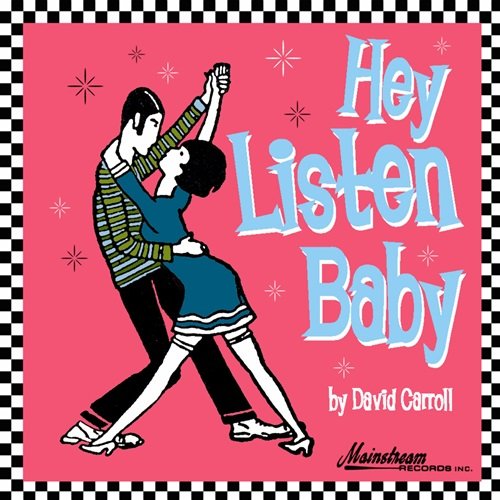
![Richard Carr, Czech National Symphony Orchestra, Vladimir Martinka - Richard Carr: The Leap (2025) [Hi-Res] Richard Carr, Czech National Symphony Orchestra, Vladimir Martinka - Richard Carr: The Leap (2025) [Hi-Res]](https://img.israbox.com/img/2025-12/22/0ruhq82oeu9h4oypzf8u61qbv.jpg)
![Specht - Dawn (2022) [Hi-Res] Specht - Dawn (2022) [Hi-Res]](https://img.israbox.com/img/2025-12/21/6134nsos4nwrfp8p503nmr24q.jpg)
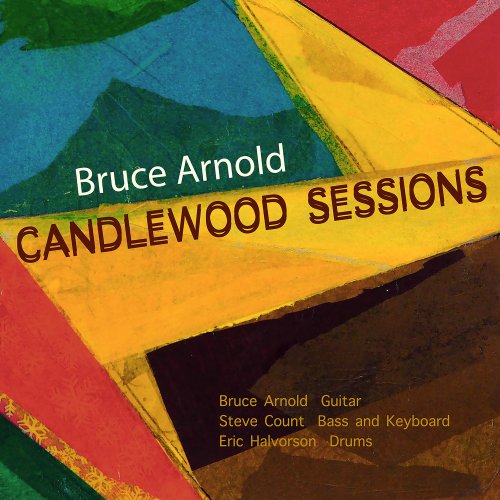
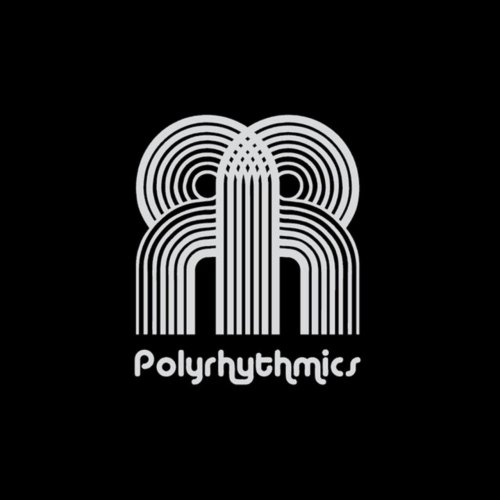
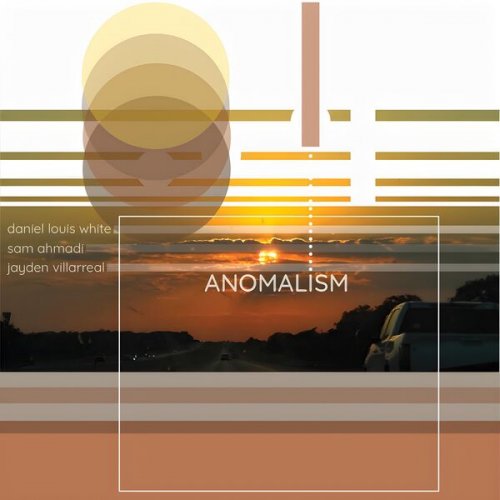
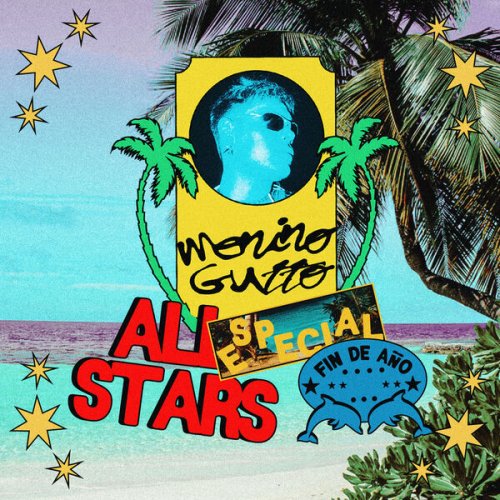
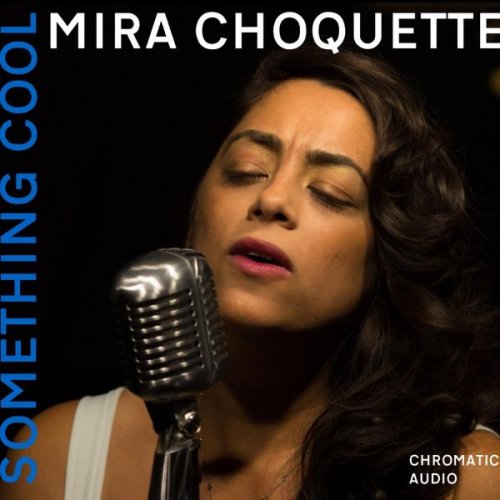
![VA - Who Loves You? A Tribute To Jaco Pastorius (2003) [Hi-Res] VA - Who Loves You? A Tribute To Jaco Pastorius (2003) [Hi-Res]](https://www.dibpic.com/uploads/posts/2025-12/1766570996_r8byrhmtd2qlc_600.jpg)